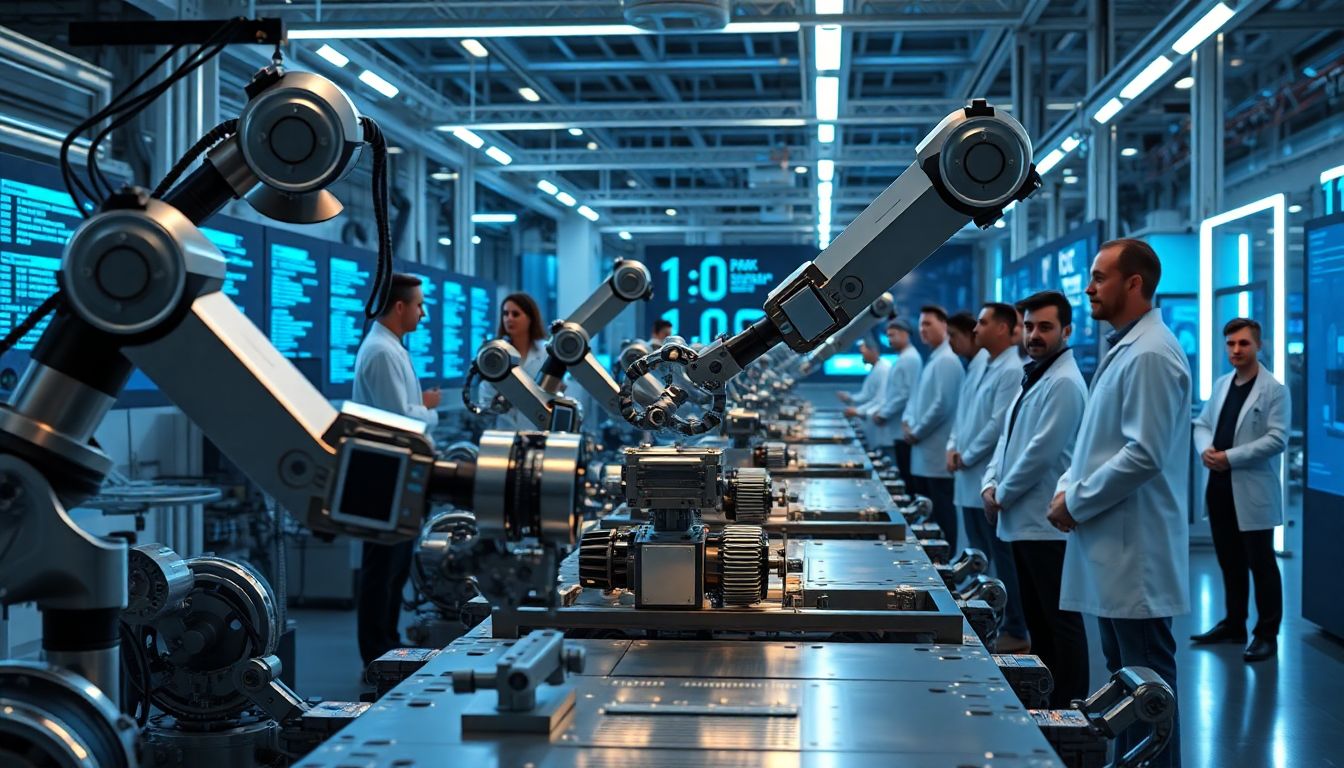
Introduction
Programming languages are the backbone of robotics. They decide how robots move and react. As automation grows, so does the variety of code used to run robots. Today, robots are everywhere — from factories to hospitals and even in homes. Understanding which languages power these machines helps us see how they work and what future they hold. This article aims to reveal the most common programming languages used in robot making. We’ll explore their uses, benefits, and tips for choosing the right one for your project.
Understanding Robotics Programming: An Overview
Robotics programming is the way we tell robots what to do. It involves writing instructions that control hardware and software. These instructions run on different types of robots, from simple arms to clever AI-powered machines. The language you choose impacts how fast and accurate a robot is. It also affects how easy or hard it is to create new features or fix problems. Selecting the right language is crucial for making robots work well.
Popular Programming Languages for Robotics Development
Many languages are used in creating robots, each with strengths and weaknesses. Let’s look at the top choices:
C and C++
C and C++ are the giants of robot programming. They are used in embedded systems where speed matters. Think of small controllers like Arduino or advanced systems like the Robot Operating System (ROS). They give you fast, direct access to hardware. That’s why many industrial robots are built with C++.
Advantages:
- Very fast and responsive
- Great for real-time control
- Works well with hardware devices
Limitations:
- Harder for beginners
- More complex syntax
Python
Python is very popular among roboticists today. Its simple syntax makes coding easier. It’s used a lot in AI, machine learning, and drone projects. Python has many libraries that speed up robot programming.
Advantages:
- Easy to learn and read
- Lots of ready-made tools and libraries
- Ideal for simulation and testing
Limitations:
- Slower than C++
- Less suited for time-critical tasks
Java
Java offers portability. It runs on almost any platform, making it popular for educational robots. Java is often used with Android-based robots or simple automation tasks.
Advantages:
- Cross-platform compatibility
- Rich libraries
- Good for object-oriented design
Limitations:
- Not great for low-level hardware access
- Slightly slower than C++
Other Notable Languages
- Lua: Small scripting language used in games and simulation environments.
- MATLAB: Used mainly for data analysis, control systems, and simulations.
- ROS (Robot Operating System): Not a language but a framework. It supports C++, Python, and others, helping develop complex robot software faster.
How the Choice of Language Depends on Robot Type and Application
Different robots need different programming languages:
- Industrial Robots: Use C or C++. Speed and control are king here.
- Research Robots: Favor Python for quick testing and upgrades.
- Educational Robots: Use Java or block-based tools. They’re easier for beginners.
- AI-Powered Robots: Rely heavily on Python because of AI libraries like TensorFlow.
Matching the language to the robot’s purpose makes development smoother.
Real-World Examples of Programming Languages in Robotics
Some famously advanced robots show the power of specific programming languages:
- Boston Dynamics’ Atlas: Uses C++ for motion and control systems.
- DJI Drones: Use C++ and Python for flying algorithms.
- LEGO Mindstorms: Employs visual programming based on LabVIEW, with embedded firmware in C.
- ROS Ecosystem: Mainly supports C++ and Python for robot development.
These examples highlight how different languages serve specific needs.
Expert Insights and Industry Trends
Many robotics engineers say C++ remains the backbone of performance-critical robots. However, Python’s ease of use has led to its rapid growth, especially in research and AI. Industry watchers predict more AI-focused languages and tools will become common. This shift will help robots become smarter and more adaptable.
Actionable Tips for Choosing the Right Programming Language
- Identify the robot’s complexity and real-time needs.
- Consider your own coding skills and the resources available.
- Use simulation tools to test multiple languages before building the real robot.
- Keep an eye on emerging trends like AI and machine learning tools.
Choosing the right language isn’t just about what’s popular but what fits your project best.
Conclusion
Many programming languages play vital roles in robot creation. C++, Python, and Java are among the most used. Picking the best one depends on what your robot needs to do. Whether it's speed, ease of use, or adaptability, match your project with the right language. As robotics grows, knowing which language to choose will help you build smarter, faster, and more efficient robots. Stay curious and keep exploring new tools and techniques to shape the future of automation.
Comments
Post a Comment